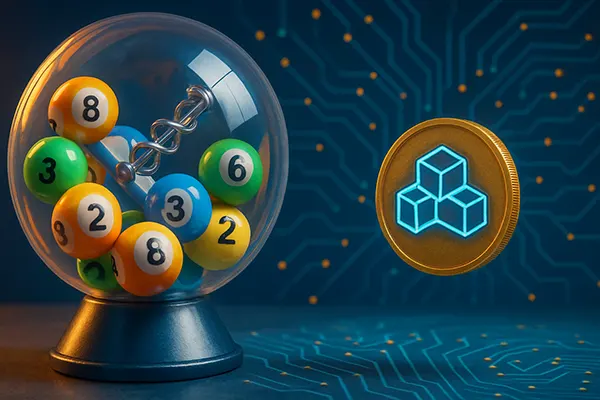With the rapid evolution of digital technologies and the increased demand for transparency in gambling systems, the question arises: can lotteries become truly transparent through open-source blockchain solutions? As traditional systems often operate behind closed doors, the prospect of using distributed ledger technology (DLT) introduces the possibility of verifiable and tamper-proof digital draws. This article explores whether blockchain-based, open-source lotteries can offer the level of trust that users expect in 2025.
Understanding the limitations of traditional lottery systems
Most traditional lotteries are operated by private or government-controlled entities. While regulations do exist, the actual draw process typically happens behind closed systems. There is no direct way for participants to audit or verify the results independently, leading to a longstanding trust deficit.
Even when results are announced publicly, the mechanisms behind number generation—such as RNG (Random Number Generator) protocols—remain hidden. Users are expected to take the word of the operators or regulators without access to underlying data. This opaqueness often fuels suspicion and conspiracy theories.
In recent years, efforts have been made to improve auditing practices using external firms, but these are costly, infrequent, and still leave users reliant on intermediaries. This raises the need for solutions where verification is decentralised and does not depend on a single authority.
The potential of blockchain technology for lottery transparency
Blockchain’s inherent properties—immutability, decentralisation, and cryptographic verification—present a transformative opportunity for digital lotteries. Smart contracts can automate ticket generation, draw execution, and prize allocation without human interference, all while being publicly auditable.
Each transaction and logic function within a smart contract can be reviewed by the public, providing full transparency over how and when winning numbers are drawn. This transparency helps build user confidence and eliminates the “black box” effect of traditional lottery software.
Moreover, decentralised applications (dApps) allow the community to contribute code, report vulnerabilities, or even vote on draw parameters, shifting control from centralised institutions to open communities. This empowerment further aligns with principles of fairness and accountability.
Successful real-world implementations and open-source initiatives
As of June 2025, several blockchain projects have made strides in implementing provably fair lottery systems. Notable examples include PoolTogether (built on Ethereum), which operates a no-loss lottery through smart contract savings pools, and LuckyBlock, which offers draws using decentralised architecture and token-based governance.
These systems rely heavily on open-source codebases. On GitHub, users can inspect the exact algorithms used for number generation, timing, and fund distribution. The openness of the code fosters collective scrutiny and improvement, increasing system resilience and fairness.
Auditing firms and the broader crypto community now play an active role in verifying smart contracts before deployment. Some projects even incentivise white-hat hackers to detect bugs through bounty programs. This shared accountability model is far more agile than traditional regulation.
Technical and regulatory challenges to full adoption
Despite the promising nature of blockchain lotteries, they face several hurdles. Technically, smart contracts must be airtight to avoid exploits, and any error in logic can result in significant financial losses. Unlike traditional codebases, deployed contracts are often immutable, requiring extreme caution before launch.
Another issue is gas fees and blockchain congestion. On networks like Ethereum, participating in decentralised lotteries may become costly during peak usage periods, creating a barrier for small participants. Scalability solutions, such as Layer 2 protocols, are helping but not yet universally adopted.
On the legal front, many jurisdictions still lack clear regulations for decentralised gambling. Projects risk being labelled illegal or facing restrictions without licensing, even if their code is open and transparent. Governments have yet to fully adapt their frameworks to accommodate such innovations.

The road ahead: Are blockchain lotteries the future of digital gambling?
The concept of a provably fair lottery, verifiable by anyone with internet access, aligns perfectly with the ethos of open-source and blockchain technologies. If done correctly, such systems could redefine trust in gambling, eliminating the need for blind faith in operators or auditors.
Future development will likely focus on enhancing usability, reducing costs, and ensuring regulatory compliance without sacrificing transparency. Integrations with mobile wallets, simplified UX, and educational tools will be key to broader public adoption beyond the crypto-savvy audience.
Ultimately, the success of open-source lotteries hinges not only on technology but also on public perception and government openness to innovation. If these elements align, blockchain-based draws could become the new norm for fair and transparent lottery experiences.
Final thoughts on open-source lottery integrity
Open-source code, by its very nature, encourages scrutiny and community involvement. When coupled with blockchain’s verifiable records, it creates an environment where digital draws are no longer opaque events but publicly auditable processes. This model reduces corruption risks significantly.
However, transparency alone does not guarantee safety. Developers and communities must remain vigilant, ensuring that the security of smart contracts evolves alongside the sophistication of threats. Active governance and timely updates are essential.
As technology advances and legislative bodies begin to understand the implications, the vision of a global, transparent, and fair digital lottery system is no longer speculative—it is increasingly achievable, and perhaps inevitable.